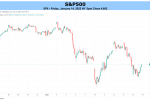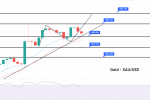New Zealand Dollar Forecast: Failing to Follow Rebound in Risk Appetite – Setups in NZD/JPY, NZD/USD

NEW ZEALAND DOLLAR OUTLOOK:
- The major NZD-crosses are not performing as well as they ought to be, considering the strength in equity markets and in commodity prices.
- Technical indicators suggest momentum remains bearish, setting up ‘sell the rally’ opportunities in both NZD/JPY and NZD/USD rates.
- According to the IG Client Sentiment Index, the New Zealand Dollar has a mixed bias in the near-term.
SIGNIFICANT UNDERPERFORMANCE
Failing to Follow Risk NZD/USD: The New Zealand Dollar’s stretch of weakness appears on track to continue. After losing around -5% against a basket of major currencies in November, the rebound in December was offset by another decline around -4% in January.
On one hand, the Kiwi’s weakness has to do with rates markets getting too far ahead of the Reserve Bank of New Zealand, which has left the New Zealand susceptible to policy disappointment. On the other hand, the instability seen in risk markets at the start of the year has exacerbated an already weak trend in the Kiwi.
In the near-term, despite a torrid rebound in global equity markets coupled with a weaker US Dollar (via the DXY Index) over the past two days, the New Zealand Dollar has not been able to keep pace. In and of itself, this is a bad omen: a weak currency has only produced a feeble rebound in an easier environment, leaving it vulnerable to further downside in the immediate future.
NZD/JPY RATE TECHNICAL ANALYSIS: DAILY CHART (MARCH 2020 TO JANUARY 2022) (CHART 1)

At the start of 2022, NZD/JPY rates failed to hold above the ascending trendline from the March 2020 and August 2021 lows, and the subsequent attempt to climb back above said trendline failed again in the middle of the month. Since January 14, the pair has closed below its daily 8-EMA every session; even the rebound seen at the start of this week produced a long upper wick, hinting at sustained selling pressure.
NZD/JPY rates are still below their daily 5-, 8-, 13-, and 21-EMA envelope, which remains in bearish sequential order. Daily MACD is continuing to trend lower below its signal line, while daily Slow Stochastics are nestled in oversold territory. Opportunities to sell rallies against the daily 8-EMA – the area around 76.00 where December’s double bottom was established – should be seized as the pair is now back within the descending channel from April to October 2021. The failed bullish breakout attempt hints at a deeper setback towards 72.00 over the coming weeks.
NZD/USD RATE TECHNICAL ANALYSIS: DAILY CHART (JANUARY 2021 TO JANUARY 2022) (CHART 2)

Like their NZD/JPY counterpart, NZD/USD rates have closed below their daily 8-EMA every session over the past two weeks, and bearish momentum remains strong. Still below its daily EMA envelope, which remains in bearish sequential order, NZD/USD rates are still in ‘sell the rally’ mode. Daily MACD is trending lower below its signal line, while daily Slow Stochastics are holding in oversold territory. The immediate target lower is 0.6467, the 50% Fibonacci retracement of the 2020 low/2021 high range. Only a close above the daily 8-EMA would invalidate this perspective.
IG CLIENT SENTIMENT INDEX: NZD/USD RATE FORECAST (JANUARY 31, 2022) (CHART 3)

Failing to Follow Risk NZD/USD: Retail trader data shows 70.47% of traders are net-long with the ratio of traders long to short at 2.39 to 1. The number of traders net-long is 2.37% higher than yesterday and 10.77% higher from last week, while the number of traders net-short is 16.77% higher than yesterday and 9.50% lower from last week.
We typically take a contrarian view to crowd sentiment, and the fact traders are net-long suggests NZD/USD prices may continue to fall.
Positioning is less net-long than yesterday but more net-long from last week. The combination of current sentiment and recent changes gives us a further mixed NZD/USD trading bias.






